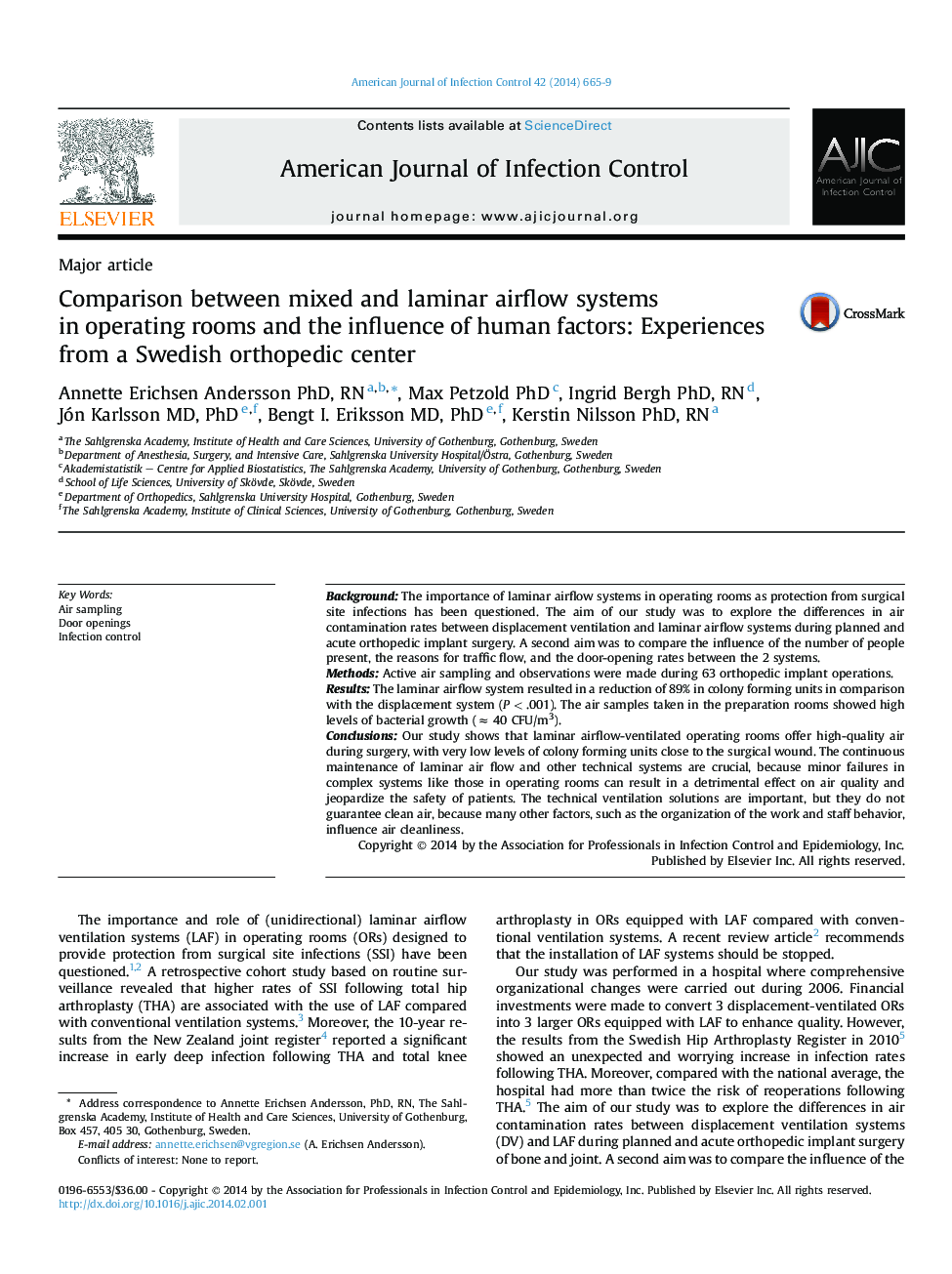| Article ID | Journal | Published Year | Pages | File Type |
|---|---|---|---|---|
| 2638198 | American Journal of Infection Control | 2014 | 5 Pages |
BackgroundThe importance of laminar airflow systems in operating rooms as protection from surgical site infections has been questioned. The aim of our study was to explore the differences in air contamination rates between displacement ventilation and laminar airflow systems during planned and acute orthopedic implant surgery. A second aim was to compare the influence of the number of people present, the reasons for traffic flow, and the door-opening rates between the 2 systems.MethodsActive air sampling and observations were made during 63 orthopedic implant operations.ResultsThe laminar airflow system resulted in a reduction of 89% in colony forming units in comparison with the displacement system (P < .001). The air samples taken in the preparation rooms showed high levels of bacterial growth (≈ 40 CFU/m3).ConclusionsOur study shows that laminar airflow-ventilated operating rooms offer high-quality air during surgery, with very low levels of colony forming units close to the surgical wound. The continuous maintenance of laminar air flow and other technical systems are crucial, because minor failures in complex systems like those in operating rooms can result in a detrimental effect on air quality and jeopardize the safety of patients. The technical ventilation solutions are important, but they do not guarantee clean air, because many other factors, such as the organization of the work and staff behavior, influence air cleanliness.
